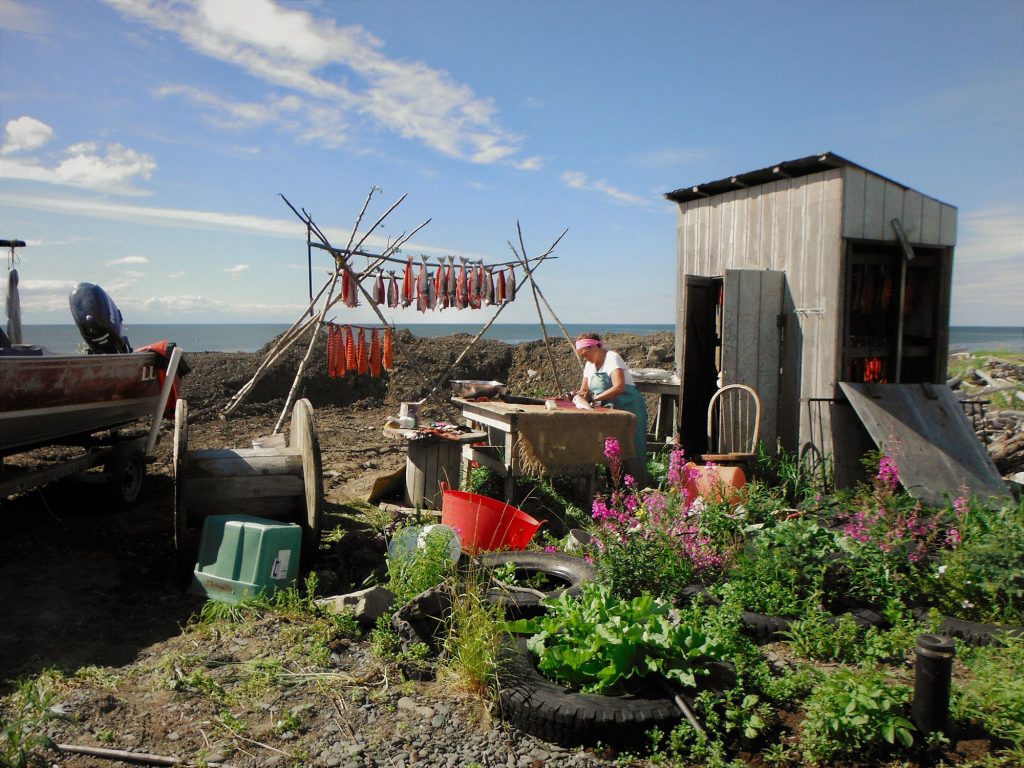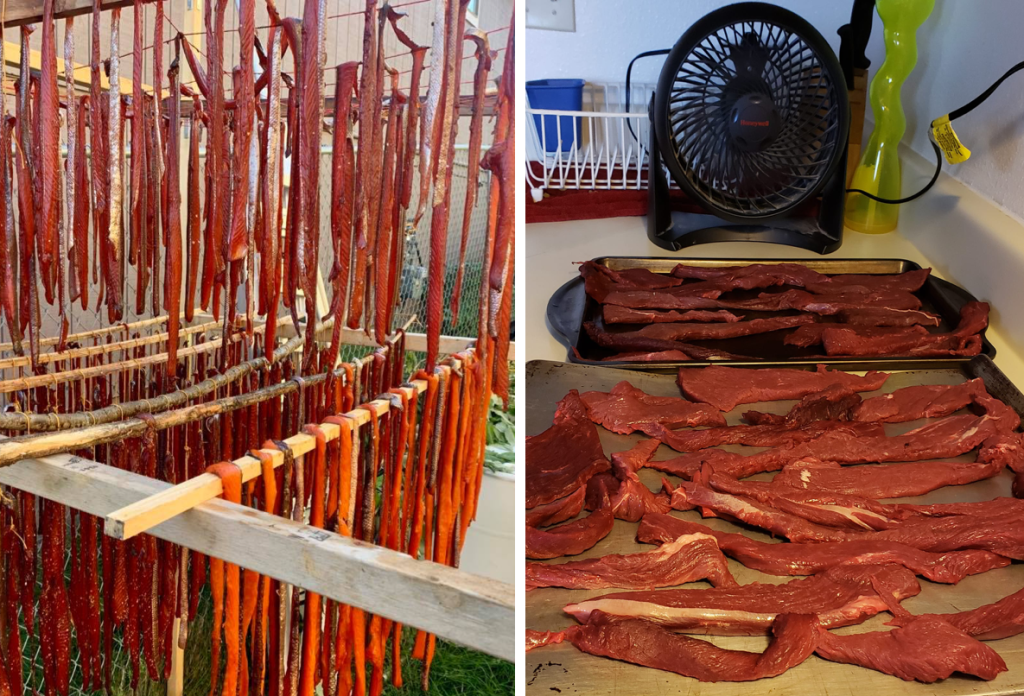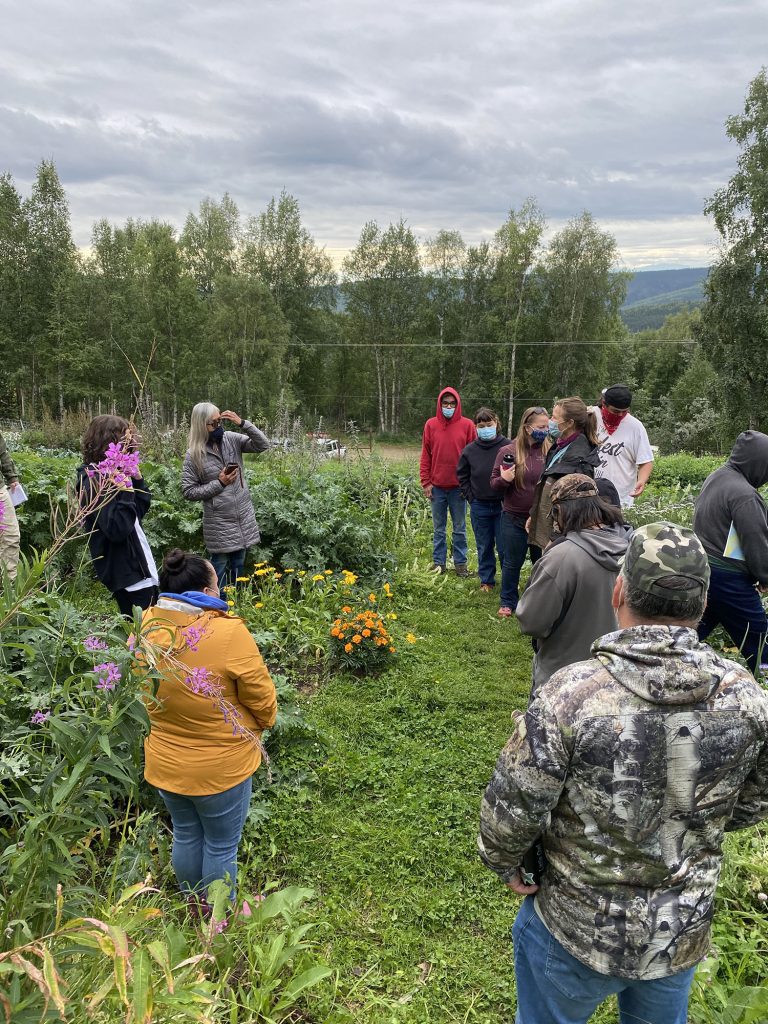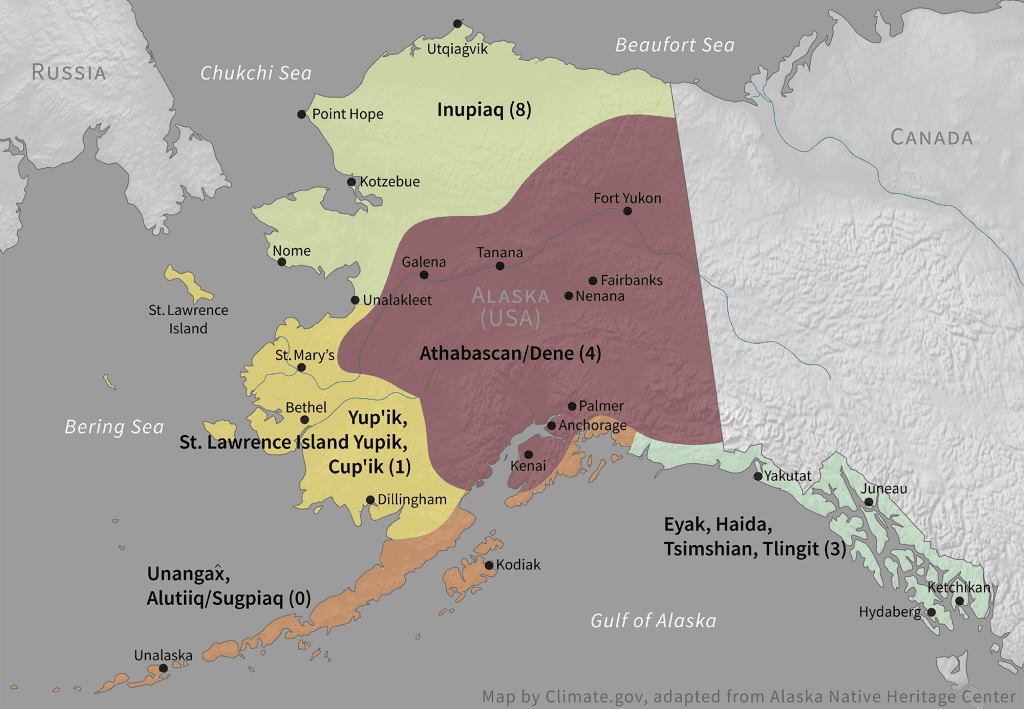N. Johnson1,2, K. S. Erickson (Inupiaq)3, D. B. Ferguson4, M. B. Jäger (Citizen Potawatomi Nation)5, L. L. Jennings (Wixárika & Pascua Yaqui)6, A. R. Juan (Tohono O’odham Nation)7, S. Larson (Ahtna and Supiaq)8, W. K. S. Smythe (Haida)9, C. Strawhacker10, A. Walker (Akimel O’otham)11, and S. R. Carroll (Ahtna)6
1National Snow and Ice Data Center, Boulder, CO, USA
2Cooperative Institute for Research in Environmental Sciences, University of Colorado Boulder, Boulder, CO, USA
3Ikaaġun Engagement, Anchorage, AK, USA
4Department of Environmental Science, University of Arizona, Tucson, AZ, USA
5Native Nations Institute, University of Arizona, Tucson, AZ, USA
6Mel & Enid Zuckerman College of Public Health and Native Nations Institute, University of Arizona, Tucson, AZ, USA
7International Indian Treaty Council, Tucson, AZ, USA
8Chickaloon Village Traditional Council, Chickaloon, AK, USA
9American Indian Studies and Earth and Environmental Science, University of Minnesota Duluth, Duluth, MN, USA
10Office of Polar Programs, National Science Foundation, Alexandria, VA, USA
11Climate Science Alliance, San Diego, CA, USA
Highlights
- The COVID-19 pandemic has exacerbated existing challenges for Alaska Natives in accessing traditional and store-bought foods.
- The strength of Indigenous cultural and economic practices such as food sharing networks helped mitigate these challenges.
- Policies and programs that support access to traditional foods and Indigenous sovereignty strengthen the ability of individuals and communities to respond to significant events that break down supply chains and restrict mobility.
The COVID-19 pandemic led to the cancellation of the 2020 Nay’dini’aa Na’Kayax’ (Chickaloon Native Village) culture camp, which had been held annually for the previous 20 summers—or since time immemorial, as the formal camp continued a tradition of gathering to share food, stories, and knowledge. The previous summer, Nay’dini’aa Na’Kayax’ welcomed Indigenous Foods Knowledges Network (IFKN) members to join the camp. IFKN convenes Indigenous community members and researchers from the Arctic and US Southwest for place-based knowledge exchange about Indigenous foods. At the camp, network members learned how to fillet and preserve salmon alongside village youth, sharing meals and stories around the campfire. The cancellation of the 2020 camp, along with similar celebrations and gatherings across Alaska, disrupted intergenerational knowledge sharing about Indigenous food systems.
In light of these disruptions, IFKN leadership saw an opportunity to engage in a research project that asked: How has the COVID-19 pandemic impacted food access for Indigenous individuals in Alaska and the US Southwest? In this essay, we share what we have learned from interviews conducted with Alaska Native experts as part of this project. Experts were individuals who had knowledge of traditional foods and who maintained a close connection with their home community and land in 2020.
Challenges to food access in Alaska during the COVID-19 pandemic
For the experts we spoke with, the pandemic created direct and indirect challenges related to food access in Alaska, including restricted access to traditional harvesting areas and harvesting infrastructure (Jenkins 2020; Sullivan 2021) (Table 1). Several experts noted that quarantine restrictions prevented them from traveling to seasonal harvesting areas used by family members for generations. This also limited access to infrastructure such as cabins, fish nets, and smoke houses (Fig. 1). Additionally, some extended families chose not to stay at harvesting camps together due to the emphasis on social distancing. Conversely, some experts reported that more people were at fish camp in summer 2020 due to closures of schools and workplaces, which created an opportunity for uninterrupted time on the land for those able to take advantage. Harvesters modified trips to limit social interaction by carrying extra gas and therefore avoided refueling stops where they would normally exchange information with others. Shared infrastructure, such as hunting cabins that are often used by separate hunting parties at the same time, saw similar limits to access. The cancellation of formal camps and land-based programs, such as the 2020 Nay’dini’aa Na’Kayax’ culture camp, also limited access to traditional foods for families without an active harvester or their own harvesting infrastructure. In some cases, formal teaching of traditional food harvesting skills, such as classes offered through Ilisaġvik College in Utqiaġvik, shifted to an online format.
| Challenge | Cause(s) | Solutions | Scales of Response |
|---|---|---|---|
| Unable to access harvesting territory | Quarantine restrictions | Shift location of harvest (e.g., by driving from a larger town rather than flying back to a small village); Use food sharing networks to ship food by freight; Use frozen or previously preserved harvested food | – Individual – Family |
| Unable to access harvesting infrastructure | Quarantine restrictions; Social distancing requirements | Rent, purchase, or build new infrastructure (e.g., boat rental, car purchase, indoor fish drying rack); Carry additional fuel when hunting (in lieu of refueling en route) | – Individual – Family |
| Harvesting with others outside of household | Social distancing requirements | Use of masks; limiting numbers at fish camp; Avoid mixing groups on the land | – Individual – Family |
| Cancellation of community feasts, celebrations, potlatches | Social distancing requirements | Reorganize distribution (e.g., socially distanced pick up or drop off); Increase funding for harvester support programs with distribution to elders and other community members in need; Use CARES funding for freezer purchase | – Family – Community – Native Village |
| Store-bought food access | Supply chain issues; Ravn Airlines bankruptcy and flight cancellations; Quarantine restrictions; Other issues (e.g., state reduction of ferry service) | Sharing store-bought food with family, neighbors; Shipping food by freight; Use of soup kitchens and food pantries; Distribution of food boxes; Authorization of Emergency Hunt | – Individual – Family – Native Village/ Non-governmental organization – Federal Subsistence Board |
| Declining Mental Health; Feeling stressed/depressed | Social isolation due to quarantine/social distancing requirements | Participation in harvesting activities; Participation in organized activities for children/youth (reduced in 2020); Provision of mental health services (reduced in 2020) | – Individual – Family – Regional corporation |
| Low salmon numbers in 2020 and 2021 | Exact cause unknown, but probable causes include climate and other environmental stressors, commercial fishing practices | Harvest different foods; Experiment with agriculture; Fish donations | – Individual – Family – Community – Corporations and non-governmental organizations |


COVID-19 precautions also resulted in the loss of social aspects of food sharing, with the cancellation of extended family gatherings, community celebrations, and ceremonies. Experiencing cultural gatherings is an integral component of Indigenous food systems, as sharing food and stories connects people, land, animals, and waters (Inuit Circumpolar Council-Alaska 2015, 2019). By summer 2020, most large gatherings were restricted, contributing to feelings of loneliness, boredom, and social isolation. Some experts described feeling less motivated to participate in harvesting activities due to pandemic-related stress and depression; others shared concerns about loss of physical activity and companionship for community Elders who were unable to harvest. Experts also mentioned the disruption of extended food sharing networks that rely on opportunistic exchange when someone travels from one community to another (e.g., for a sports tournament). These networks are used to access foods that are not harvested locally.
Although unrelated to COVID-19, a number of experts referenced the low numbers of salmon in major Alaska rivers during the 2020 salmon runs that created an additional stress on food systems. Salmon fishing was closed in some locations, while in others, reduced quotas significantly restricted access. In the Interior, families prepared nets and repaired fish wheels only to learn that fishing was not permitted. One expert from southeast Alaska reported that their family caught few salmon due to a combination of social distancing and the smallest sockeye run in memory. Other environmental issues mentioned included climate change impacts on sea ice and seasonality of harvesting, a declining caribou population, algal contamination of shellfish, and garbage in the Bering Sea (see essay Marine Debris).
Experts also reported governance challenges related to the ability to change harvesting practices during COVID-19. For example, the Organized Village of Kake (OVK) used an emergency hunt authorization to increase their supply of fresh meat during summer 2020. The island community was experiencing shortages due to pandemic-related supply chain issues and state cuts to the ferry service that resupplied food from the mainland. The State of Alaska sued the federal government over the authorization of the hunt, arguing that the state should maintain jurisdiction over natural resources (Douglas 2020; Resneck 2020). Native organizations, like the First Alaskans Institute, supported the OVK and the importance of prioritizing subsistence use of resources above commercial and sport fishing and hunting. The US District Court for Alaska sided with the federal government, allowing emergency hunt authorizations to continue (Estus 2020).
Beyond barriers to traditional food access, COVID-19 related restrictions, supply chain disruptions, and business closures created challenges for access to store-bought foods. One prominent example is the sudden closure in April 2020 of Ravn Airlines, which filed for bankruptcy largely due to pandemic-related disruptions to service (Anderson 2020). This left a number of communities, such as Atqasuk on the North Slope, without scheduled air service and with disruptions to freight supply for local grocery stores (Sullivan 2020). In other small communities connected to the road network, quarantine requirements made it difficult to drive to larger towns where groceries could be purchased more affordably. One expert estimated a 30 percent increase in his family’s grocery bills due to freight charges when he was unable to drive to Fairbanks to shop. Many individuals reported shortages of store-bought goods, particularly early in the pandemic, including staple foods as well as ammunition and jars used for canning harvested foods.
Actions that supported access to food during the COVID-19 pandemic
Despite substantial challenges, individuals reported being able to access the food they needed thanks to both existing practices and programs as well as innovative responses (Table 1). The food sharing networks that are an essential part of Alaska Native food systems were robust and helped individuals, households, and families weather the stresses posed by COVID-19 impacts. Food sharing with neighbors, Elders, and those without a harvester in their family were common responses. Those who were unable to return home for harvesting received shipments of food from relatives. Alternative distribution methods for sharing—food drop-offs or pickups arranged to support social distancing—were utilized as social events were cancelled.
Institutional adaptations to support access to traditional foods were also implemented. Existing harvester support programs that pay hunters to provide food to Elders and others who lack access continued to fill this essential function; some Native villages used COVID-19 CARES Act funds to provide additional resources for these programs. Some villages received donations or purchased fish to distribute. Regional ANCSA (Alaska Native Claims Settlement Act) corporations and tribes provided additional sources of food resources, both traditional (e.g., salmon, fish eggs, and shrimp) and nontraditional foods. Other institutions, including schools and church groups, provided access to prepared meals. Where they existed, such as in Utqiaġvik, food pantries also increased access to food for individuals experiencing food shortages. One expert described the establishment of a soup kitchen in her community; while it had been in the works before the pandemic, COVID-19 provided additional incentive to launch the new institution.
Individuals unable to access traditional harvesting territories and infrastructure adapted in various ways. Some rented boats, purchased cars, and improvised outdoor and indoor drying methods so that they could harvest while being located in larger towns (Fig. 2). One expert harvested new species, including porcupine and beaver, based on hearing from Elders that these animals were historically harvested. The practice of storing food in times of plenty to eat in times of need also proved invaluable, with frozen, dried, and jarred fish taking on particular importance during a season of salmon shortages. The use of freezers was mentioned as particularly important; some Native villages, such as Rampart and Arctic Village, used CARES Act funding to support freezer purchases. Other Native villages used funds to purchase and distribute boxes of store-bought food or provide gift cards for the local store. Finally, several experts described agricultural pursuits during the pandemic such as planting home gardens, distributing seeds in the community, and organizing to build community greenhouses (Fig. 3).




Learning from the challenges presented by a pandemic
This study was designed to provide an overview of impacts from COVID-19 relatively early in the pandemic. Interviews were conducted at a time when many were hopeful that the pandemic was receding. The experts we interviewed identified the interruption of the cultural dimension of food sharing as the largest impact of COVID-19 on Indigenous food systems in Alaska in 2020. As the pandemic continued, some social gatherings were reinstated. In the summer of 2021, for example, Nay’dini’aa Na’Kayax’ was again able to hold its culture camp, albeit with fewer participants to support social distancing. A subsequent surge of cases driven by the COVID-19 Delta variant prompted further precautions and cancellations of large gatherings in the fall of 2021 (Slontik et al 2021). What we report therefore reflects a particular period of the pandemic.
Our study points to programmatic and policy priorities to support food sovereignty during significant events such as the COVID-19 pandemic. First, existing practices and initiatives that support access to traditional foods, such as food sharing networks and harvester support programs, continued to function well during the pandemic. This finding runs contrary to media messages that emphasize the challenges faced by Indigenous communities rather than highlighting solutions and innovations. That these networks and programs worked well under the additional stress created by COVID-19 underscores their significance and the importance of continuing to support them.
Second, the ability to harvest traditional foods depends on mobility and access to infrastructure. When these are restricted, one solution is to support flexibility in harvesting and resource management. For example, proxy hunting could allow friends and relatives to use the quota of an individual who is unable to access harvesting territory or infrastructure. This flexibility relies on full tribal sovereignty and ensuring Indigenous representation on boards and decision-making bodies responsible for setting resource policy.
Methods and approach: Building upon trust and relationships to gather information
This project draws on the concept of relational accountability to people, animals, and places (Jäger et al. 2019). An Indigenous Research Advisory Committee (RAC) worked closely with the project team (PT) of university-based researchers to develop the proposal and carry out each stage of the project. In fall 2020, we co-developed an interview guide and completed Institutional Review Board approvals at the University of Arizona and the University of Colorado Boulder. From January-May 2021, PT members conducted 31 semi-structured interviews of experts (16 in Alaska, 15 in the US Southwest) who were either members of the IFKN network or recruited by members of the RAC. Alaska Native experts were from four out of five cultural regions of Alaska (Inupiaq, Yup’ik & Cup’ik, Athabascan/Dene, and Eyak, Haida Tsimshian, Tlingit), with half from the Inupiaq region (Fig. 4); they were female (9), male (6), and two-spirit (1) and ranged in age from Elders (70+ years old) to young adults in their 20s. The recruitment of experts was successful because of strong, pre-existing relationships, including those established through IFKN meetings as well as those held by RAC members.


After conducting interviews, the PT conducted a thematic qualitative analysis of interview transcripts using a grounded theory approach to identify important themes (Thornberg and Charmaz 2014). The PT and RAC then reviewed the themes and analyzed the data. Experts and IFKN steering committee members were sent a copy of the analysis and input was solicited at an online meeting. All project activities were conducted remotely on Zoom or by phone.
Acknowledgments
The authors are grateful for funding from the Office of Polar Programs and Navigating the New Arctic at the National Science Foundation (award numbers 1745499, 2035161, and 2035233). The project also received support from the Morris K. Udall and Stewart L. Udall Foundation. Thank you to all the cultural practitioners and experts for sharing your knowledge and stories. Finally, we thank all Knowledge Keepers: human, land, and non-human kin.
References
Anderson, T., 2020: Wheels up: Ravn will return to the skies under new ownership. Alaska Business, https://www.akbizmag.com/monitor/wheels-up-ravn-will-return-to-the-skies-under-new-ownership/ (27 August 2020).
Douglas, J., 2020: The Alaska Native village of Kake defends their right to hunt. High Country News, https://www.hcn.org/articles/indigenous-affairs-justice-the-alaska-native-village-of-kake-defends-their-right-to-hunt (12 October 2020).
Estus, J., 2020: Emergency hunts in Alaska can continue. Indian Country Today, https://indiancountrytoday.com/news/emergency-hunts-in-alaska-can-continue (27 November 2020).
Inuit Circumpolar Council-Alaska, 2015: Alaskan Inuit Food Security Conceptual Framework: How to Assess the Arctic From an Inuit Perspective: Summary Report and Recommendations Report. Anchorage, AK. https://iccalaska.org/wp-icc/wp-content/uploads/2016/03/Food-Security-Summary-and-Recommendations-Report.pdf.
Inuit Circumpolar Council Alaska, 2019: Alaskan Inuit Food Sovereignty Summit Report. Anchorage, Alaska.
Jäger, M. B., and Coauthors, 2019: Building an Indigenous foods knowledges network through relational accountability. JAFSCD, 9(B), 45-51, https://doi.org/10.5304/jafscd.2019.09B.005.
Jenkins, E., 2020: Amid food supply chain concerns, tribal governments request emergency hunts. KTOO Public Media, https://www.ktoo.org/2020/04/14/amid-food-supply-chain-concerns-tribal-governments-request-emergency-hunts/ (14 April 2020).
Resneck, J., 2020: Native rights group backs Kake in lawsuit over emergency subsistence hunt. Alaska Public Radio, https://www.alaskapublic.org/2020/09/04/native-rights-group-backs-kake-in-lawsuit-over-emergency-subsistence-hunt/ (4 September 2020).
Slontik, D. E., E. Medina, and M. Baker, 2021: Hospitals in Alaska struggle to handle a worsening outbreak. The New York Times, https://www.nytimes.com/2021/09/22/us/covid-alaska-hospital.html (22 September 2021).
Sullivan, M., 2020: Alaska airline shutdown: ‘How are we gonna get our food, our mail, our medical needs?’ Indian Country Today, https://indiancountrytoday.com/news/alaska-airline-shutdown-how-are-we-gonna-get-our-food-our-mail-our-medical-needs (30 May 2020).
Sullivan, M., 2021: ‘We don’t exist out here’ without subsistence. Indian Country Today, https://indiancountrytoday.com/news/we-dont-exist-out-here-without-subsistence (19 October 2021).
Thornberg, R., and K. Charmaz, 2014: Grounded theory and theoretical coding. The SAGE handbook of qualitative data analysis, 153-169.
December 6, 2021
